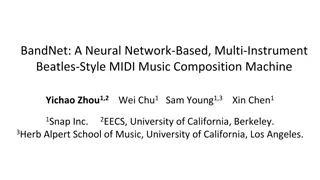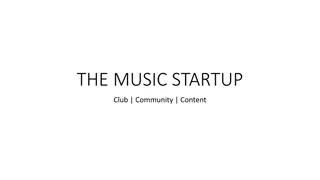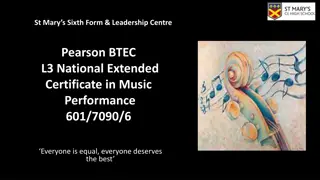Digital Music Industry Transformation
Explore the evolution of the digital music landscape, from the traditional CD era to the disruptive impact of MP3 technology and streaming services. Discover the challenges faced by record labels, the emergence of online platforms, and potential strategies for the industry to adapt and thrive in the digital age.
Uploaded on Mar 01, 2025 | 3 Views
Download Presentation

Please find below an Image/Link to download the presentation.
The content on the website is provided AS IS for your information and personal use only. It may not be sold, licensed, or shared on other websites without obtaining consent from the author.If you encounter any issues during the download, it is possible that the publisher has removed the file from their server.
You are allowed to download the files provided on this website for personal or commercial use, subject to the condition that they are used lawfully. All files are the property of their respective owners.
The content on the website is provided AS IS for your information and personal use only. It may not be sold, licensed, or shared on other websites without obtaining consent from the author.
E N D
Presentation Transcript
Digital Music University of Rochester Simon Business School Haotian Gong Gengfei Li William Trigg Minjia Zhan
Competitive Landscape Before Digital Buyers Purchasing CDs only option Needed additional hardware (CD player, stereo) Suppliers Record labels were very influential Manufacturers Threat of Entry Easy to enter, difficult to scale up Substitutes Other entertainment (e.g., dance, theater) Live music Competition Large labels dominated market Smaller labels competed but struggled to grow
Disruption Invention of the MP3 file allowed internet users to easily access music without a tangible purchase Technology firms (Apple, Napster) started selling MP3 files for a fraction of the price of CDs Advances in storage technology facilitated new music hardware such as the iPod and Zune Music streaming made music even more accessible (any song anywhere) Start-ups (e.g., Spotify) began offering free streaming services
Competitive Landscape With Digital Suppliers Competitive: online stores, streaming start-ups Few or no physical stores Weakened record labels Buyers Internet users: large number Easily accessed at home Price sensitive Threat of Entry Medium: Difficult to generate cash flow Low initial investment needed for tech firms Competition High: Easy to switch platforms Low per-unit revenue Substitutes Other entertainment (e.g., dance, theater) Live music Older tech: CDs, records
Factors/Issues Streaming music is easily accessible More affordable for consumers no purchase necessary Revenue fell industry-wide as pricing models changed
Reaction Resistance from record labels to sell to digital vendors caused losses Technology firms (e.g., Apple) began selling MP3 files
Potential Solutions Record labels should have embraced digital music sooner M&A: Acquire digital music or tech firms to gain market power Partner with tech firms earlier to leverage stronger position over a smaller digital market Invest internally in digital music platform Use digital platform to promote physical products
Potential Solutions: M&A Challenges: Startup does not want to be merged Conflict between two organizational culture Benefits: Head start with technology pivot Promptly identify and embrace trend Diversify company products Access new customers through internet
Potential Solutions: Partner with Digital Music Firm Challenges: Limited revenue stream Young industry implies instability High cost due to customized demand and equipment requirements Benefits: High exposure for music Broaden customer base and loyalty
Potential Solutions: Invest Internally Challenges: Time-consuming High cost in regards to labor and equipment Product cannibalization Benefits: Fit in the market in the long term Brand recognition Gain the market share in the first place as pioneers
Risks & Mitigation Takes much more time and we are not pioneers The digital platform is more advanced and we have a customer base Hard to find suitable person for engineering team Use human resources tools to identify talents Customers may feel uncomfortable with the new technology Discounts and available options
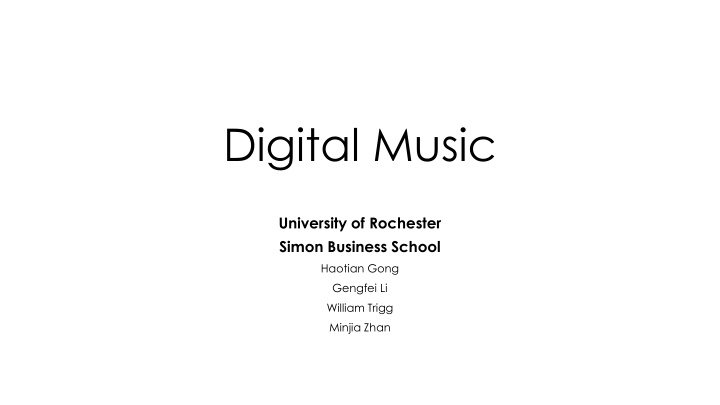

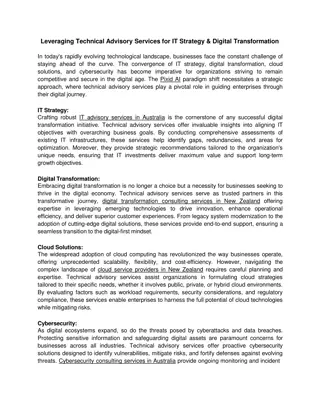
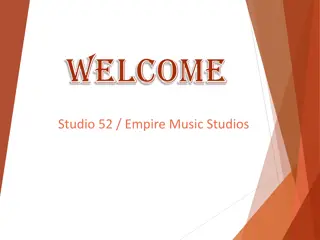
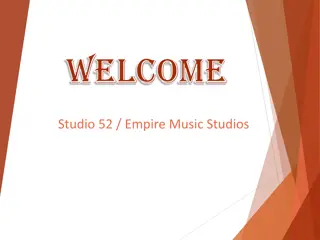

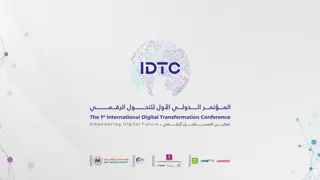

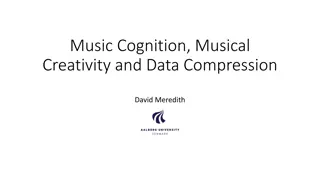

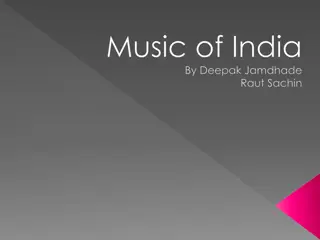
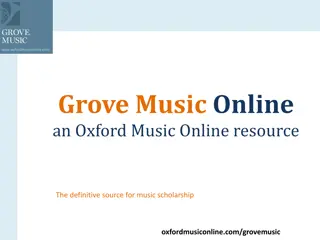

![The Exciting World of Live Music Through [Insert Town/City] Census!](/thumb/148894/the-exciting-world-of-live-music-through-insert-town-city-census.jpg)
